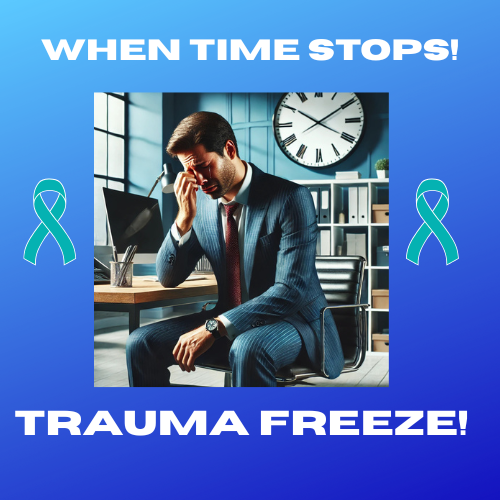When Love feels like chasing Shadows
Recognizing and Escaping Dismissive-Avoidant Attachment
The rain had been falling for hours, soft but relentless, blurring the city lights outside her window. She stared at her phone again; still no reply.
The message she’d sent was simple: “Hope your presentation went well today.”
But it hung in the air unanswered, like so many other words she’d said in the quiet between them.
When they were together, there were fleeting, golden moments, when she thought she saw a glimpse of warmth, connection, even love.
But it would vanish just as quickly, leaving her feeling like she was trying to embrace smoke. And every time she reached out, the wall between them grew a little higher.
If you’ve ever felt this ache, the exhaustion of chasing connection with someone who keeps pulling away, you may have been entangled with a person with dismissive-avoidant attachment behavior. This isn’t simply about being “emotionally unavailable.”
It’s a deeply wired survival pattern born from past trauma.
Question?
Have you ever experienced a relationship where love seemed elusive and unattainable?
Please share your experience in the comments; your story might help someone else feel less alone.
The Hidden Wound Behind Emotional Distance
I know this story far too well.
As a child, I learned early that emotional needs weren’t welcome. My parents weren’t cruel, but the connection simply wasn’t part of the equation. I handled my problems, kept my thoughts to myself, and quickly became self-sufficient. When school report cards came, there were no words of encouragement, just reminders that I wasn’t satisfactory enough.
That pattern followed me into adulthood.
In the military, my ability to shut down emotionally became a tactical advantage. I learned to compartmentalize, to focus, and to never let my guard down.
But the same armor that kept me alive on the battlefield built walls in my personal life. Receiving love felt dangerous. Giving love felt even riskier.
People with dismissive-avoidant attachment carry similar histories. Many grew up in environments where emotional expression was ignored, met with rejection, or even punished.
Over time, they decided, often unconsciously, that closeness equals pain. So, they mastered independence until intimacy itself became threatening.
How to Recognize Dismissive-Avoidant Behavior
At first, individuals with dismissive-avoidant behavior can seem engaging, charismatic, and even attentive. But as the relationship deepens, you may notice patterns:
Deflection in conversation: Avoiding personal or emotional topics, responding with short, vague phrases like “I’m fine” or “It’s not a big deal.”
Controlled emotions: Rarely displaying vulnerability and appearing unaffected by conflict or emotional expression.
Withdrawing during conflict: Disappearing or becoming unreachable for days instead of resolving problems.
Limited intimacy: Affectionate in private but distant in public, or physically present yet emotionally absent.
Self-reliance at all costs: Willing to give help but resisting receiving it, guarding independence fiercely.
Question?
What are the subtle signs you noticed in someone who struggled with emotional closeness?
Your insight could be a lifeline for someone right now.
The Toll on You
Remaining in a relationship with a dismissive-avoidant partner can slowly erode your confidence. You may feel like you’re always “too much,” become consumed by self-doubt, or find yourself addicted to the fleeting moments of warmth that keep you hoping for change.
Question?
If you’ve walked away from a dismissive-avoidant relationship, what was the moment you knew you had to leave?
Comment and talk about those defining moments.
Five Steps to Disconnect Without Causing More Harm
1. Document the Pattern
Journal your interactions for two weeks. Record when you feel valued versus dismissed. This clarity will help you see the truth without the emotional fog.
2. Set Internal Boundaries First
Before changing outward actions, define what you will no longer tolerate. Let go of the belief you can “fix” them. Their healing is their responsibility.
3. Communicate Your Needs Once
State your needs calmly and clearly. Example: “I need consistent communication and emotional availability to feel secure.” Listen to their response without defending your position.
4. Create Space
If your needs aren’t met, reduce contact gradually. Decline some invitations, limit texting, and invest in relationships that make you feel safe and valued.
5. Exit with Grace
When ready to leave, thank them for the good moments, explain your needs aren’t compatible, and wish them well. Avoid drawn-out explanations that reopen wounds.
Question?
What’s the one self-care practice that helped you rebuild after an emotionally distant relationship?
Drop your best healing tip below.
Moving Forward Without Regret
Their inability to connect deeply is not a measure of your worth; it’s a survival pattern they learned long before you arrived.
You cannot love someone to heal, and you shouldn’t lose yourself trying. The right person will not make you feel like you’re chasing shadows.
They’ll meet you in the light.
Question?
If this article reminded you of someone who may be facing this challenge, please consider sharing it with them.
Occasionally, one conversation can change a life.
© 2025 www.soundthetrumpet.org









